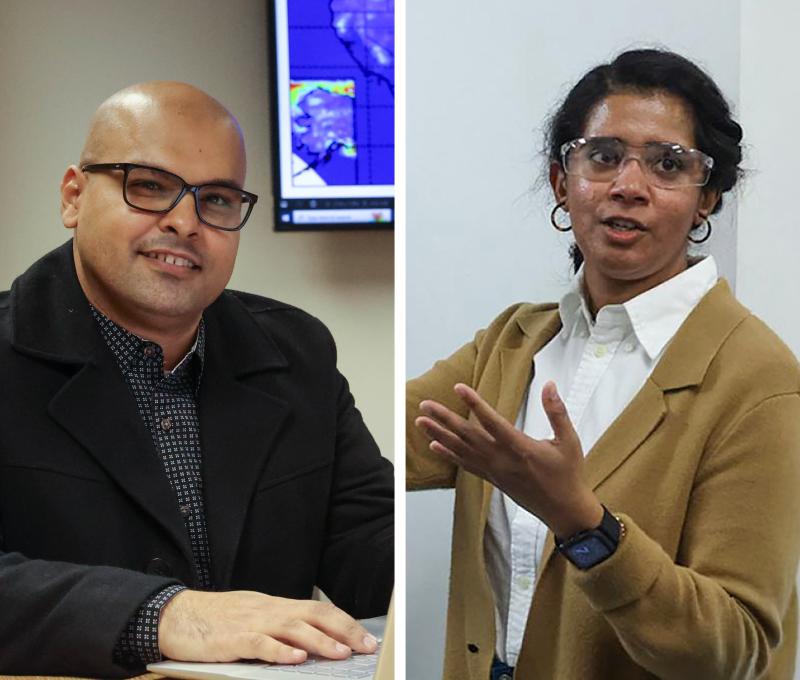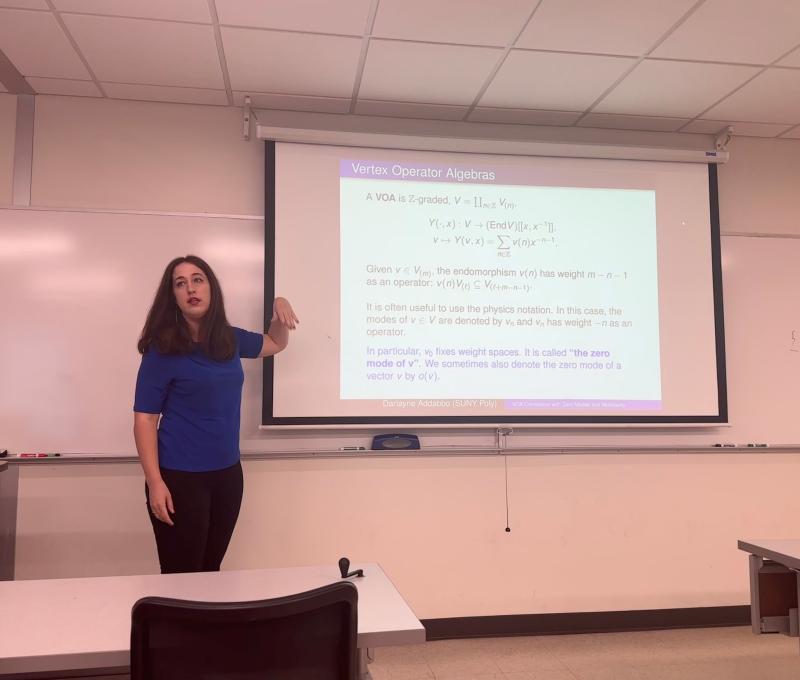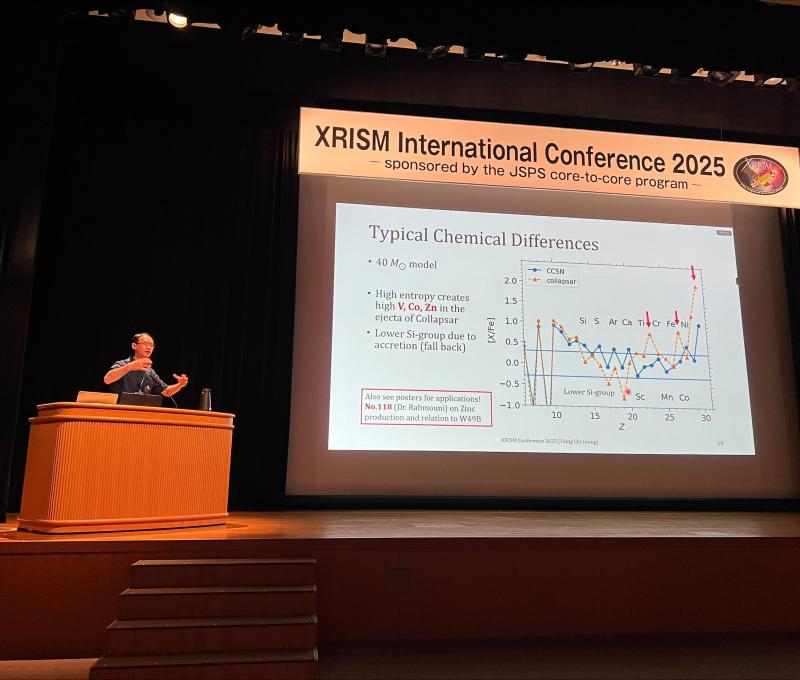Professor Shing Chi Leung Discovers Hidden Dark Matter Signatures from Gravitational Waves in Collaborative Research

Dr. Shing Chi Leung, SUNY Poly assistant professor of physics, published with Mr. Ho Sang Chan, MPhil graduate in Physics of the Chinese University of Hong Kong, and Dr. Ming Chung Chu, Professor of Physics of the same institute, a peer reviewed article in The Astrophysical Journal. They discovered for the first time how to use gravitational wave signals from collapsing stars to pin down the properties of the evasive dark matter particles.
Dark matter is a class of mysterious particles which only interact with gravity, so we cannot observe it directly. But its existence is supported by various observations in the cosmic scale. For example, direct cosmological simulations show that dark matter provides the necessary seeds and gravity for galaxies to form, including the Milky Way Galaxy. In view of that, many international collaborations are launching experiments to detect dark matter particles directly. So far, no conclusive discovery has been made. Indirect searches, at the same time, have become an important alternative, which predict the potential effects of dark matter on astrophysical objects. By looking for features of stars created by the presence of dark matter, we may unveil the unseen side of the dark matter particles.
One particular scenario where dark matter becomes important is during the stellar collapse of a white dwarf (known as accretion-induced collapse). White dwarf is the evolutionary endpoint of a star below 8 times of the mass of the Sun. An isolated white dwarf can exist in a stable maanner; but in a binary system, the accretion of matter from its companion star may make the white dwarf exceed the stable maximum mass, the Chandrasekhar mass. Beyond that point, the self-gravity becomes strong enough that the contraction becomes uncontrolled. The white dwarf which has a radius of about 1000 km shrinks and becomes a neutron star with a radius of about 10 km within one second. General relativity predicts that such vigorous movements can create ripples in the spacetime, i.e. gravitational waves. When dark matter is present, the gravity also affects the dark matter and makes it follow the collapse. The motion of dark matter then adds extra features to the gravitational wave signals.
While the concept is clear, there is no work in the literature which attempts to model this process due to the numerical difficulties from the dark matter component. For the first time, the team succeeded in building self-consistent simulations that simultaneously keep track of the movement of the ordinary matter and the dark matter, and predict the gravitational wave generations. The team shows that the presence of dark matter can leave distinctive low-frequency signals in the gravitational waves. Such signals do not exist when no dark matter is present. The team concluded that these signals can be the key to identify dark matter in a collapse event. The team further showed that these gravitational wave signals can be detected by current detectors, when these events take place in the Milky Way Galaxy. These detectors include the well-known advanced-LIGO (Laser Interferometer Gravitational-Wave Observatory, sites in Hanford, WA and in Livingston, LA).
The team will continue to input more realistic physics to refine the simulations for more accurate predictions. They expect future detectors, such as LISA (Laser Interferometer Space Antenna), will be able to detect more similar events to help physicists identify the dark sector of the universe.
Reference:
Ho-Sang Chan, Ming-Chung Chu, Shing-Chi Leung, “Accretion-induced Collapse of Dark Matter-admixed Rotating White Dwarfs: Dynamics and Gravitational-wave Signals”, Astrophysical Journal 945, 133 (2023).
Link: https://iopscience.iop.org/article/10.3847/1538-4357/acbc1d (arXiv: 2301.06093)







